One dog breed seems to have it all; they’ve won the hearts of thousands and promise to be the darling of future generations.
Labradors are the most popular purebred dog in the USA, Canada, UK, and Sri Lanka.
Globally, Labradors are the third most popular dog breed, but what is it about the charming Labrador that makes them so lovable?
Labradors are popular the world over because they are:
- Versatile
- Outstanding pets due to their affectionate natures
- Perfect family dog due to their steady, tolerant attitudes
- Adaptable
- Reliable and not considered dangerous
- Highly trainable, intelligent, and eager to please

Everyone has a preferred dog breed (which may not be a Labrador), but few people can deny the popularity of the versatile Labrador.
Labradors are consistently within the top 10 most popular dogs regardless of people’s nationality, culture, race, or language, but what makes this breed the world’s favorite pooch?
Click Here to Jump to a Section
Labradors Are Versatile
An old maxim says, “no PR is bad PR.” In other words, the key to popularity is exposure.
Labradors have rarely hit the news for bad behavior, but their popularity continues to rise due to extensive public exposure.
Thanks to the versatility of Labradors, they are one of the most widely recognized dog breeds, even amongst those who claim no love for dogs!
Labradors are multi-talented and perform many jobs that enrich and save the lives of humans. These include:
- Working dog jobs
- Service dog jobs
- ESA and therapy dogs
- Pets
- Hunting Dogs
Labradors Are Widely Used As Working Dogs
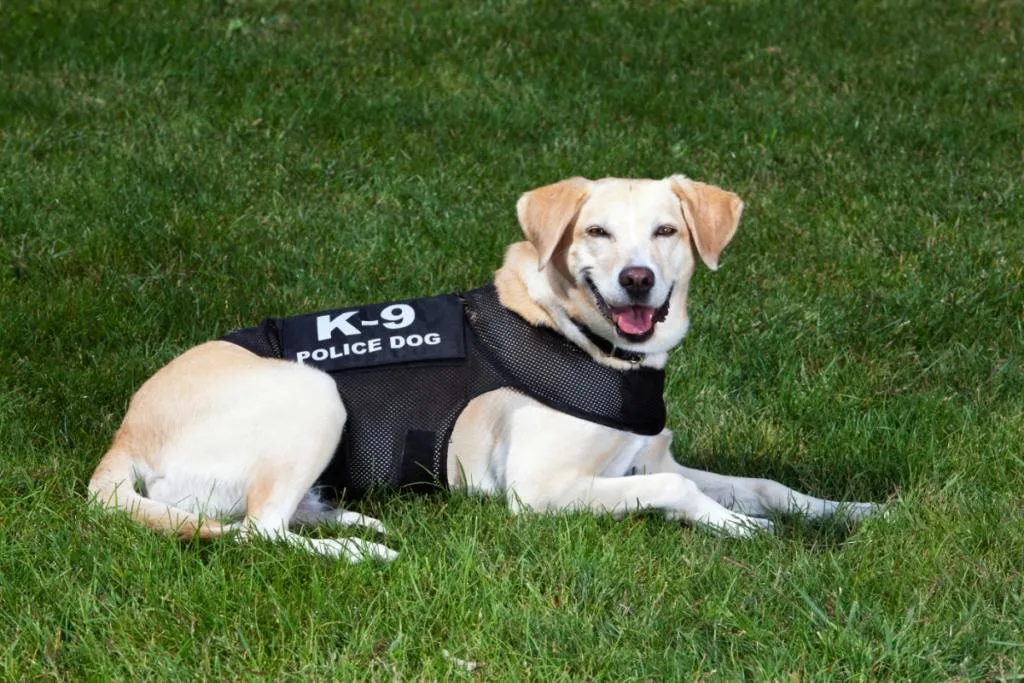
Working dogs have been taught to perform a specific task to assist humans.
Working dogs differ from service and therapy dogs in that a working dog is not trained to enhance the independence, functionality, and quality of life of a disabled or ill person.
Working dogs can perform many different tasks ranging from herding to attack work to search and rescue.
Few Labradors have the necessary aggression needed to excel in attack work. However, this does not stop the ever-willing Lab from functioning as a:
- Search and rescue dog
- Cancer and allergen detection dog
- Drug and explosive detection dog
In addition to the jobs mentioned above, Labradors are integral members of the combat tracking unit.
The Labradors track wounded soldiers and guide their handlers to where the injured men and women lay.
Labradors Are The Number One Service Dog
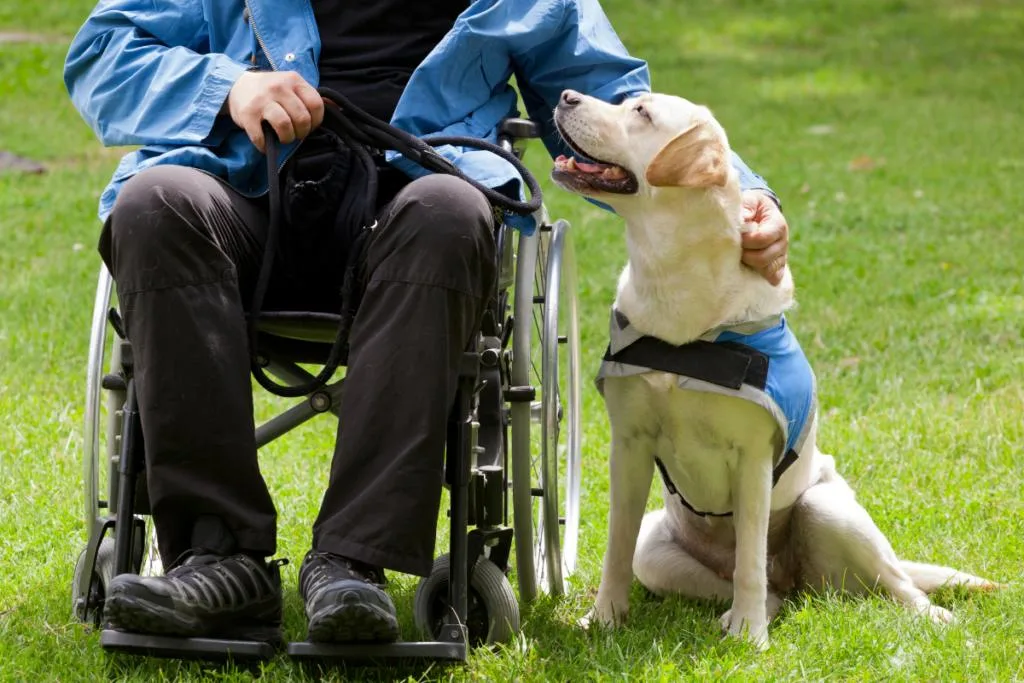
Service animals are dogs, miniature horses, and other animals trained to perform a specific activity to assist persons with disability.
Typically, a service Labrador is trained to fulfill the needs associated with a particular disability and, once trained, will be assigned to a single owner.
Across the globe, Labradors are the most widely utilized guide dog for the visually impaired.
The Labrador and its crosses account for more than 70% of guide dogs used by the American guide dog association.
Labradors have also been a resounding success as service dogs to people with autism, seizure disorders, hearing impairments, severe uncontrolled diabetes, and much more.
Labradors Are Frequently Used As Therapy Dogs
Many people believe that therapy dogs are the same as service dogs; however, there is a clear distinction between the two jobs.
Therapy dogs are human-orientated dogs that provide emotional support to people struggling with anxiety, depression, and poor mental health.
Unlike service dogs, therapy animals are not trained to assist with activities of daily living and may help numerous people while working with a single handler.
Labradors are naturally gentle and friendly dogs making them perfect for the role of therapy animals.
One of the most impactful roles therapy Labradors fulfill is emotionally supporting children who face circumstances that even adults struggle to process.
Children testifying in court or enduring an extended hospital stay are under extreme duress.
Labradors are one of the most common purebred dog breeds trained to support and encourage these vulnerable children.
Labradors Are Universally Regarded As The Ultimate Pet
Labradors have set a new record as the most popular dog breed in the USA.
The American Kennel Club’s (AKC) 2021 popularity rankings place the Labrador as the most popular American dog breed for the 30th year running!
The popularity of pet Labradors is not restricted to the USA; this lovable breed is the number one pet dog in Sweden and Denmark and the fifth most popular dog breed in Norway.
In the UK, over 39,000 new Labrador puppies are registered each year!
Labradors Are Still Relevant As Hunting Dogs
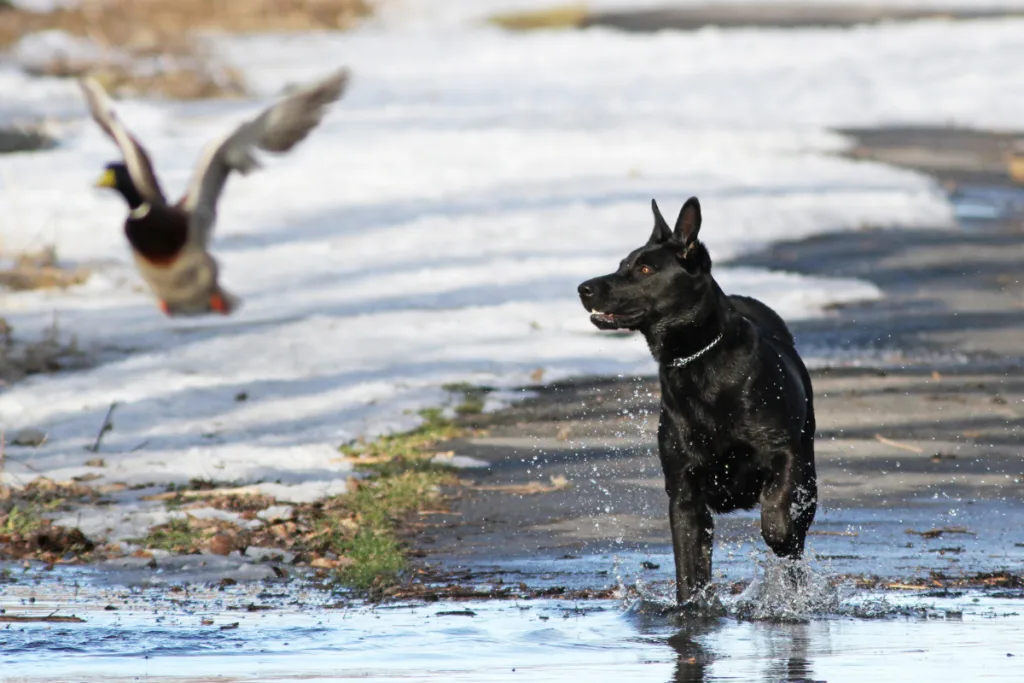
In the past, dogs were not simply “man’s best friend”; they were functional dogs bred to perform a specific job or task.
Originating in Newfoundland, Labradors were bred to be water retrievers. Their thick water repellent coat and chunky otter tail made these dogs ideally suited to navigating the icy waters of the North Atlantic.
In the 1800s, Labradors were exported to Britain. During the 19th century, British Labrador breeders outlined a breed standard that is still relevant today.
The British-based Labradors excelled as family dogs and aids to duck hunters.
During modern times, most dogs are not expected to perform a job and instead laze around the home as companion animals.
Many dog breeds have radically changed and have lost the ability to perform the task for which the breed was initially bred, e.g., the oxygen-deprived English Bulldog.
Thankfully, the Labrador has avoided this fate. The Labradors of today are still highly regarded by hunters.
Many gundog enthusiasts claim that the Labrador is one of the easiest gundog breeds to work with and the first choice for a duck hunting companion.
Labradors Make Outstanding Pets

We’ve briefly touched on the fact that Labradors are tremendously popular as pets; however, we have not examined why Labradors appeal to so many people.
Labradors are widely regarded as the ultimate pet.
Labradors are not “Stepford dogs,” nor are they perfect clones of each other; there is a wide range of temperaments, energy levels, and even body shapes to be found amongst purebred Labradors.
Although not every Labrador will suit every home, most people will find their perfect match within the Labrador breed.
Labradors Are Suitable For Novice Or Experienced Owners
Everyone starts their journey into dog ownership as a novice, regardless of whether they started when they were 12yrs old or 62yrs old.
Many first-time owners are excited but anxious about the prospect of owning and caring for a dog.
What if they make a mistake?
What if they mess up and break their dog?
What if they can’t cope?
These are all questions that new dog owners struggle to answer.
Labradors are frequently recommended as a good choice for first-time dog owners as they are relatively easy to own, especially when compared to other dog breeds.
This friendly breed has all the necessary traits to make them a trainable, fun companion. Labradors are forgiving dogs that can easily be retrained if the new owner makes a mistake.
Although Labradors are excellent first-time dogs, their appeal is not limited to new dog owners.
Under the skilled guidance of an experienced handler, Labradors will excel at numerous sports and obedience challenges.
Labradors Are Affectionate, People Dogs
Dog breeds who are known to be exceptionally aloof or independent-minded are not ideal pets; after all, the purpose of having a pet is companionship!
Like the Bloodhound or Afghan, certain dog breeds can be stubborn and difficult to handle. The first few years of owning one of these dogs can feel like living with a hormonal teenager!
The Labrador is not like these dogs; this breed genuinely adores people. While the individual Labrador’s temperament may differ, the breed is wholeheartedly affectionate to the people around them.
Labradors Can Adapt To Sedentary Or Active Lifestyles
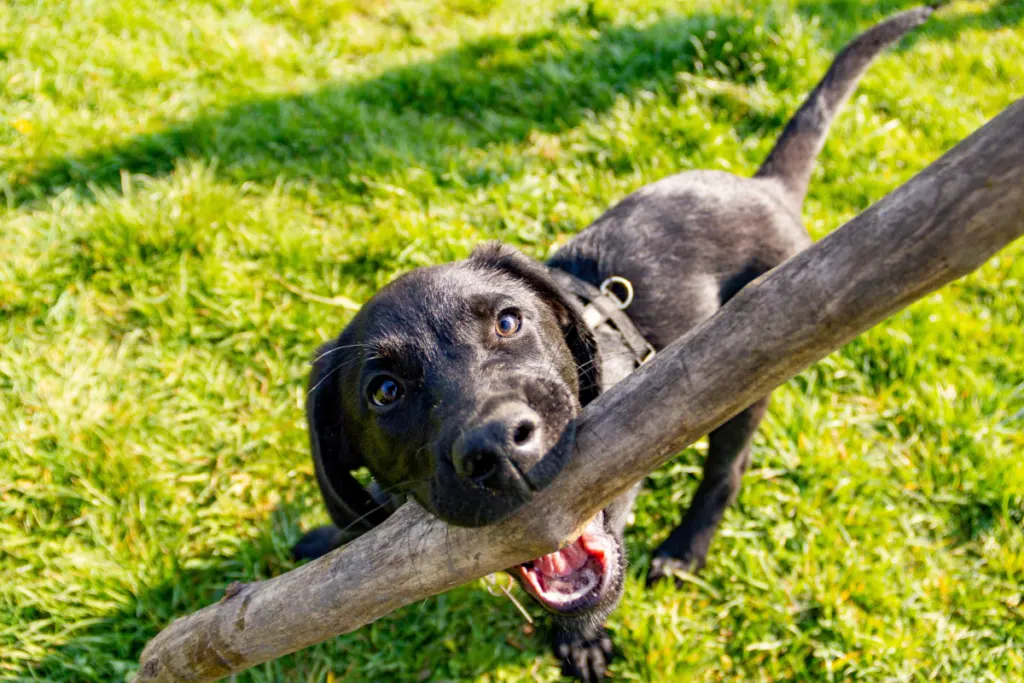
Labradors are typically high-energy dogs that do well when paired with active owners; however, this does not mean that Labradors cannot learn to adapt to a more sedentary lifestyle.
Three factors dictate whether a Labrador will adjust to a slower-paced life:
- Their breeding, i.e., show versus working lines
- The Labrador’s age
- The individual Labrador’s temperament and energy levels
Labradors bred from pet or show lines have been deliberately selected to have lower energy levels.
Whereas Labradors bred from working lines are bred to be working machines, these dogs have the stamina to keep up with hunters during an entire day of hunting!
Working line Labradors are often more “dog” than a pet home can handle, especially if they are a quiet, sedentary home.
Labradors tend to calm down and become more settled between their second and third birthday.
As the Labrador grows, it leaves its wild puppy days behind and matures into a relaxed, confident adult.
Labradors Are Friendly With Strangers And Unfamiliar Animals
Companies across the globe are slowly becoming convinced of the benefits associated with allowing employees to bring their dogs to work every day.
In the USA, 8% of workplaces permit pet dogs; however, it is not just the USA that embraced dog-friendly workplaces. Many Japanese, European and UK-based companies have also joined the pet-friendly movement.
There is one very important non-negotiable caveat to the permissibility of dogs in the workplace; the workplace dogs need to be reliably polite and friendly.
Well-socialized Labradors are friendly with strangers, both the human and animal kind.
These “workplace” Labradors offer numerous benefits:
- Increase workplace morale
- Act as a catalyst in promoting positive interactions between colleagues
- Offer unconditional support
- Lower people’s stress levels
Numerous studies have raised concerns that dogs in the workplace could cause heightened stress for employees with dog phobias.
However, a survey conducted in 2019 found that the study participants had an overwhelmingly positive attitude towards Labradors.
In this study, Labradors were given one of the highest scores, 7.05 out of 10.0. The scale ranged from 0 = petrified to be approached by a specific dog breed to 10 = ecstatically delighted to be approached by a particular breed of dog.
This study indicates that Labradors may be more readily accepted as workplace companions due to their perceived (and genuine) friendliness to strangers and other animals.
Labradors Are Great For Families

Bringing an unfamiliar canine into your home can be a daunting prospect, especially if you have little kids or other animals.
Experts consistently recommend Labradors to families looking for a friendly, kid-safe dog.
A 2019 study found that 75.7% of USA-based veterinarians would confidently recommend Labradors as family dogs due to their perceived lower bite risk of 4.6%.
You may also like:
Are Labradors Good With Small Babies? Know Your Dog
Labradors Are Happy To Love Everyone In The Family
Certain dog breeds (e.g., Basenjis, Shiba Inus, and German Shepherds) will only bond with one person.
While these breeds will be friendly to the rest of the family, it is clear that they only love “their” person.
Most people live in residential homes, limiting the number of dogs to 1 or 2 dogs per home, making it impractical to buy a dog for each family member.
Besides the residential rules governing the number of dogs within a single house, most people want a dog, not an entire dog pack!
Labradors raised in a family and given attention by all the family members are more than happy to spread the love.
These ultra-cuddly family dogs will happily play with the kids, run with dad, and sit at mom’s feet while she works.
No one is left feeling like an unloved second-class citizen when a Labrador is your family dog.
Labradors Are Great With Kids
Both parents and veterinarians rate Labradors as one of the safest dogs to have around kids.
Regardless of culture, race, or country, there are specific characteristics that all kids share, i.e., impulsivity, poor balance when learning to walk, and lack of emotional control.
Young children should be taught to interact with dogs politely; however, even the most diligent parents cannot watch their children 24/7.
Children may react impulsively or accidentally be rude to the family pet, e.g., tripping and falling onto the sleeping dog.
From the dog’s perspective, this behavior is impolite. Many dogs such as Chihuahuas, Shiba Inus, and Toy Poodles will leap up, growling at the child; they may even feel the need to bite the child.
Unlike the dogs mentioned above, Labradors are tolerant, patient, even-tempered dogs that deal well with kids.
According to a 2014 study, Labradors are one of the dogs least likely to exhibit child-directed aggression.
Apart from Labradors being kid-safe dogs, they are also excellent playmates.
An energetic Labrador will happily spend hours playing fetch or exploring the outdoors with their tiny human companion.
You may also like:
Are German Shepherds Good With Kids?
Are Rottweilers Good With Kids? Yes! And Here’s Why
Labradors Are Great With Kids, And Here’s Why!
Labradors Are Good With Other Household Pets
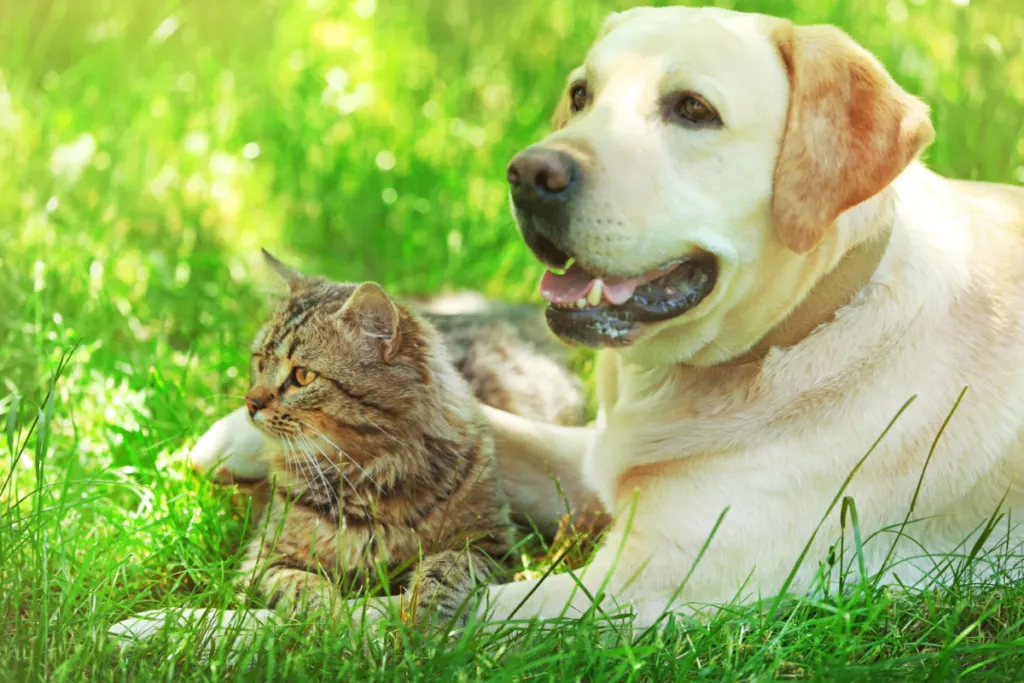
Hunting Labradors are prized for their bite inhibition and “soft mouths,” i.e., when collecting the downed duck, it is essential that the dog hold the duck gently and not mark its body.
This highly-prized trait has carried over to pet Labradors, allowing them to coexist with other family pets safely.
There is an amusing story of a Labrador who happened across a chicken. This Labrador was unfamiliar with chickens, but this did not stop her from gently collecting the chicken and carrying the bird to her owners.
The horrified owners commanded the Labrador to drop the seemingly dead chicken.
As the owners began to examine the chicken, the chicken who was playing dead leaped up and ran away, scaring the owners witless.
Most dogs would have been overcome with the instinct to chase the chicken, and the chicken most likely would have had an untimely demise. Thank goodness it was a gentle Labrador that found the wandering hen!
While the owners are understandably proud of their sweet dog, the story is not unusual for Labradors. Well-bred, properly trained Labradors display one of the lowest levels of animal-directed aggression.
Labradors consistently score as one of the least likely dog breeds to chase cats, birds, or other dogs.
Labradors Are Adaptable

Many dog breeds are adapted to living in specific environments and struggle to switch between climates.
The thick double-coated Newfoundland has been bred to withstand the harsh climates of Newfoundland.
The average summer temperature in Newfoundland is a pitifully low 61°F (16°C), while the average winter temperature is 32°F (0°C).
Due to their large size, heavy double coats, and bodies designed for cold weather, Newfoundlands struggle to adapt to hot climates.
The thin-bodied, sleek coated Greyhound has the opposite problem; this breed turns into an icicle in cold weather!
Unlike Newfoundlands and Greyhounds, the Labrador is remarkably adaptable. Their relatively short, thick, water-repellent coat makes them surprisingly cold AND heat tolerant.
A healthy adult Labrador can tolerate temperatures between 20°F (-6°C) to 90°F (32°C).
Labradors Are Not Considered To Be Dangerous
Undoubtedly one of the reasons Labradors are so popular worldwide is because they are legal in almost every country.
Labradors have never been a banned or restricted dog breed nor listed as a dangerous dog breed, unlike Pitbulls, Dogo Argentinos, and the Presa Canarios.
That said, Labradors can be protective of their owners. Unlike traditional guard dog breeds, Labradors are loved for their low levels of aggression, but this does not mean that Labradors cannot be a hero when the occasion calls for it.
There are numerous accounts of Labrador’s heroic deeds, regardless of whether they are trained to save our life or not. Here are six reports of Labradors who deserve to wear a superhero cape!

- 2021, Marley, a yellow Labrador, saved his 18-year-old owner from a rattlesnake.
- 2015, Leo, a black Labrador, fetched help when his owner’s heart stopped.
- 2011, Toby, a black Labrador, was stabbed and seriously injured when he defended his family during a home invasion.
- 2019, Timber, a black Labrador, defended his owner during a Mountain Lion attack.
- 2009, Hogie, a black Labrador mix, was seriously injured when he protected his owners during a Mountain Lion attack.
- 2013, Killian, a black Labrador-German Shepherd mix, protected a baby from an abusive babysitter.
Labradors Are Highly Trainable
Labradors are one of the most straightforward dogs to train. This breed is:
- Intelligent
- Eager to please
- Won’t challenge you to prove yourself as a trainer
Labradors Are Intelligent
Intelligence is a difficult concept to measure; is it the ability to follow commands? Solve a puzzle? Or act with common sense?
Nonetheless, humans intuitively recognize which dogs are intelligent or unintelligent, even if they struggle to verbalize why they rate certain dogs as more intelligent than others.
Stanley Coren decided to rank dog breeds according to their intelligence level using an objective measure of intelligence.
He asked 200 experienced dog obedience judges to rank 130 breeds according to how quickly a dog could learn commands.
Stanley Coren’s judges had a high degree of agreement on how the dogs were ranked.
The top 10 most intelligent breeds could perform a task correctly 95% of the time with less than 5 repetitions.
In other words, these canine Einsteins were quick studies that mastered an activity within a surprisingly short time frame.
Unsurprisingly the Labrador made the top 10.
Labradors were ranked as the seventh most intelligent breed, just behind the Shetland Sheepdog and ahead of the Papillion.
The video below is a great example of just how intelligent Labradors can be when trained properly:
Labradors Are Eager To Please
The desire to please humans is literally encoded into a Labrador’s DNA.
There are two alleles, SNP1 and SNP2, located on chromosome 6; these alleles are thought to be responsible for the high degree of sociability found in Labradors.
During a problem-solving task, Labradors will consistently seek assistance from their owners. They may attempt to “communicate” their need for help by gazing at their owners or initiating physical contact.
Labradors Won’t Challenge You As A Trainer.
I’m sure you’ve seen youtube videos of Border Collies and Malinoises demonstrating an almost unbelievable level of athletic prowess and obedience.
However, these dogs are not easy to work with and should preferably be handled by an experienced dog owner.
Both Border Collies and Malinoises are dominant, high-energy dogs that are more than most people can handle.
The Labrador’s easy-going temperament, intelligence, and typically low levels of dominance make them a far easier dog to train than high-intensity dog breeds.
Although both the Malinois and Border Collie outrank the Labrador in Coren’s intelligence rankings, it is the Labrador that consistently outperforms the Malinois and Border Collie as a service dog!
Final Thoughts
Labradors have a universal appeal that transcends borders, nationalities, and language barriers.
These friendly, easy-going dogs are highly versatile, allowing them to turn their paw to a wide array of jobs.
Labradors are ranked as the third most popular dog globally, the number one family dog, service dog, and duck hunting dog.
With a resume like that, it’s hardly surprising that the Labrador has won the hearts of thousands!
